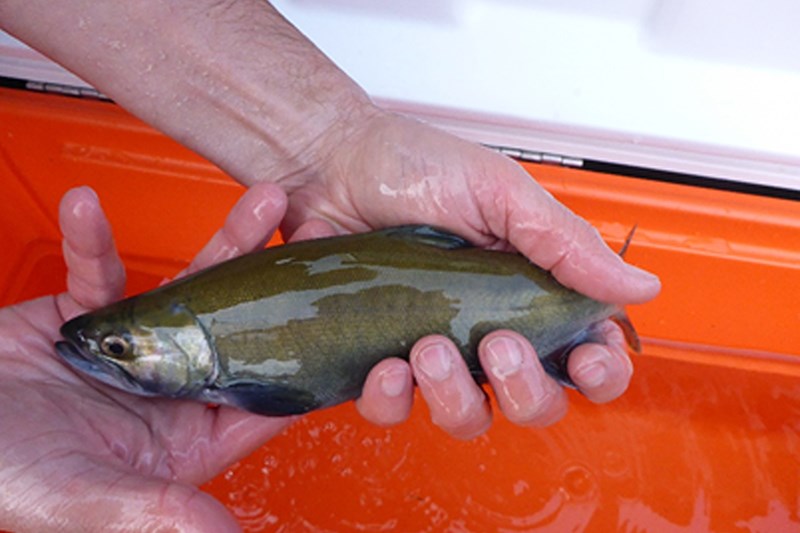Fraser River sockeye had one of the worst returns on record this summer but that hasn't stopped a local group from trying to bring back the once plentiful fish to the Coquitlam River.
A hundred years ago there were so many sockeye in the Coquitlam River that the local Kwikwetlem First Nation named themselves and the river after the prolific red fish.
Today, though, the run is barely recognizable with only one fish returning this summer to its historical spawning grounds.
Instead of giving up, however, the 13-year-old Kwikwetlem Sockeye Restoration Program is redoubling efforts to bring back sockeye to the Coquitlam River, says Craig Orr, a local authority on salmon and a consultant to both the Kwikwetlem First Nation and Watershed Watch Salmon Society.
"There's a high cultural community and spiritual value in trying to restore these fish," said Orr, who explained that the restoration program, undertaken by KFN with the support of BC Hydro, Metro Vancouver and other stakeholders, has been struggling with several challenges.
Now, however, a new hatchery program is underway that could regenerate the sockeye salmon population.
Last fall, the group collected and fertilized 5,000 lake kokanee [which have similar DNA to the migrating sockeye] for raising to the smolt stage at the Rosewall Creek Hatchery on Vancouver Island.
The goal is to release the juvenile salmon at the base of the Coquitlam dam next spring and, if they can make their way to the ocean — imprinting the taste and smell of the creek along the way — these specially-raised salmon should return to the Coquitlam River in greater numbers than have been seen in a generation.
"This is very exciting — we did this to bolster the population. We're hoping with even low [ocean] survival we're going to get some of these smolts," said Orr, who added that he'd like to see salmon return in the 100 to 200 range, which would be "spectacular."
However, the group is also working with another challenge: finding a way to get salmon smolts to migrate out of the Coquitlam Lake reservoir. Orr said tiny fish are failing to find the small outlet in the dam, some may be diverted to a pipe to Buntzen Lake, while others may not be surviving the migration through the outlet.
Consultants with experience in designing and constructing fish passages have looked at the site and a proposal will be presented to BC Hydro for more research and a possible solution this fall.
"We think it's entirely feasible to resurrect this run [but] we need an engineering fix right now," said Orr, who noted that the company R2 Resource Consultants has designed fish passage structures in the U.S.
For example, some dams have a system that creates a current drawing salmon to an outlet to the river. However, a Coquitlam River solution could be as simple as raising the water level at the Coquitlam dam and creating specially designed outlet for the fish to depart, Orr said.
"Those are the kind of experiments that need to be done along with the engineering feasibility of how to get these fish out."
Orr agreed that poor ocean survival of sockeye is also a concern, but he said giving the fish a good start in life in the Coquitlam River is one step towards helping the at-risk salmon make a comeback.



